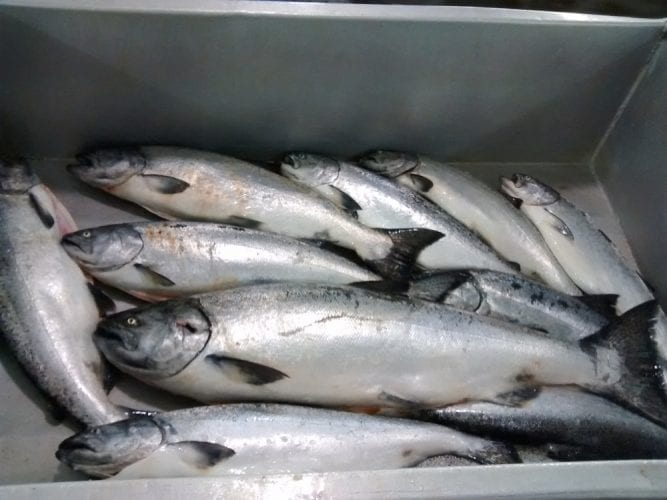
State biologists have again predicted under-performing king salmon runs in the Taku and Stikine river systems. That means Southeast Alaska’s troll and gillnet fleets can expect restrictions for sockeye and king salmon harvests in areas around Juneau and Wrangell.
“We’ll be going along in this same conservation mode that we’ve had,” state Area Management Biologist Dave Harris told CoastAlaska. “We’ll probably do very, very similar fisheries management regimes that we have in the last several years.”
Both rivers have been historically below the lower limits of the state’s escapement targets that biologists say are needed to keep the king runs healthy.
Harris says there are a number of theories to explain low king returns. They’re not fully understood though a blob of warm water offshore is one of the most well-documented causes. But for whatever reason, there’s been poor survival rates of king salmon in the open ocean.
“Our freshwater production has been dropping off now because the returns have been so small,” Harris said. “But we don’t believe there’s a fundamental ecological problem in freshwater at this point.”
The 2021 preseason forecast released Monday by the Alaska Department of Fish and Game predicts 9,900 fish on the Stikine River. The Stikine River’s escapement goal is between 14,000 and 28,000 king salmon. Some 10,300 king salmon are projected to return to the Taku River. The escapement goal on the Taku is between 19,000 and 36,000 kings.
In other words, both forecasts are well below the minimum number of fish that biologists say should return to freshwater to spawn in each river.
That means fisheries managers will close areas to trollers targeting lucrative king salmon. And he says less opportunity for the gillnet fleet to fish sockeye salmon when the kings are returning.
The Taku and Stikine river forecasts for 2021 are lower than the previous year’s. Harvest restrictions banning large mesh gear that target kings as well as a prohibition on night fishing have been in place for several years. Trollers have also seen more areas off-limits as an effort to conserve kings — also known as chinook salmon.
Alaska Trollers Association Executive Director Amy Daugherty says the poor forecast is not unexpected.
“These river systems have been coming in low for a series of years,” Daugherty said Monday. “It’s not ideal but we’re going to follow our managers and try and help these rivers recover.”
The Stikine and the Taku are Southeast Alaska’s most productive salmon fishing systems.
The largest king salmon run on record for the Stikine River was in 2006, which saw 90,000 kings. The Taku’s record year was 1997, at nearly 115,000 fish.
Both runs are on transboundary rivers that flow downstream from British Columbia. The U.S. and Canada are treaty-bound to limit their catches to keep the cross-border salmon runs sustainable.










